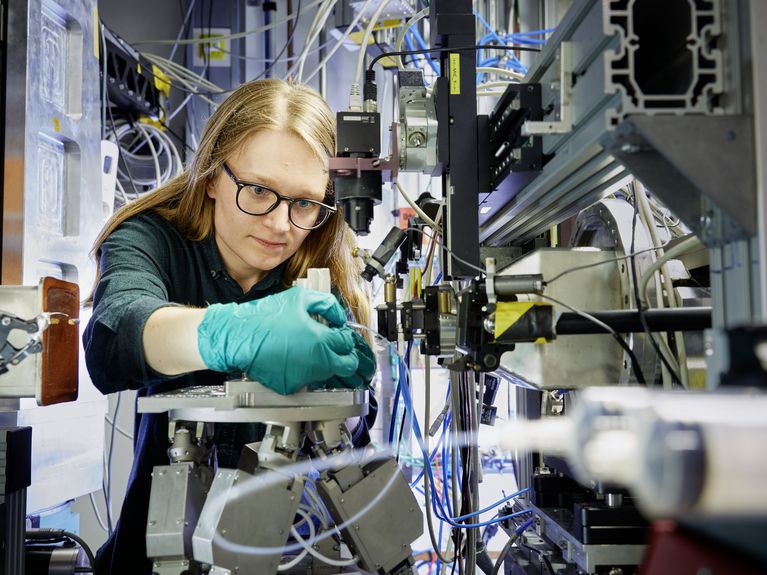
Challenge #90
New light sources for research.
The exploration of matter requires ever more powerful light sources. That is why we develop accelerator systems of the international top class.
Participating centers
Anyone who wants to take a close look at matter needs one thing above all: the brightest possible light. Special particle accelerators generate this light at a specific wavelength, such as extremely focused X-Rays or terahertz waves.
We already operate some of the world's most powerful light sources for research. PETRA III in Hamburg and BESSY II in Berlin, for example, generate X-ray flashes, while ELBE in Dresden delivers terahertz pulses.
However, in order to prepare for the future, we are already working on the construction plans for the next generation. The accelerator ring in Hamburg, for example, is to be expanded into PETRA IV. It will then generate even finer, more focused X-ray flashes. This would allow nanomaterials and chemical processes to be studied in more detail at the atomic scale. Berlin will also be home to BESSY III, which will generate soft X-ray light with improved properties - an indispensable tool for analyzing quantum materials and catalysts, for example. And in Dresden, DALI is planning a facility that will produce high-intensity terahertz pulses. These pulses could be used to examine modern superconductors or processes precisely in cell membranes.
In this way, we are creating state-of-the-art light sources that will set standards worldwide.
(Photo: DESY/Christian Schmid)